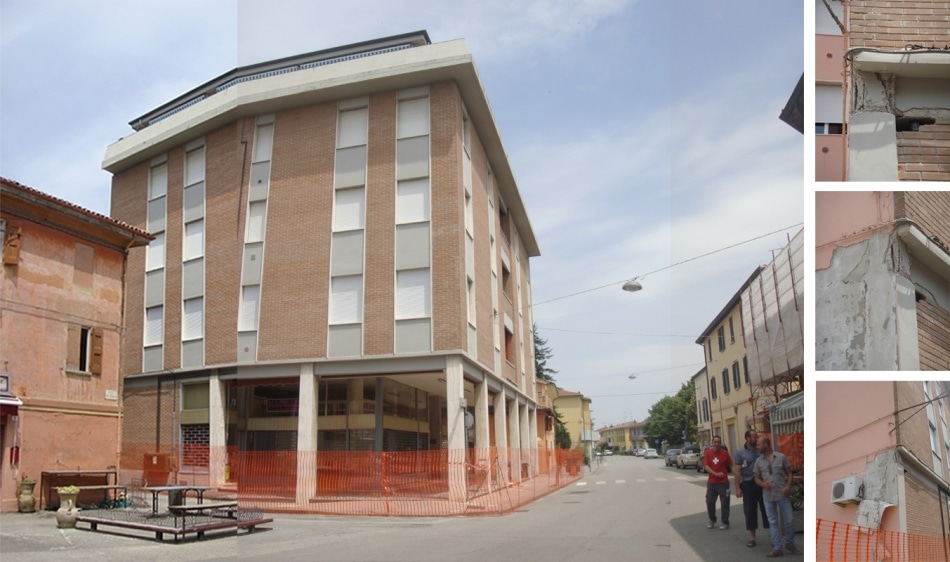Mar 14 2018
A research team belonging to the Research Group on Earthquake Engineering at School of Land Surveying, Geodesy and Mapping Engineering of UPM are aiming to figure out what types of buildings have greater tendency to suffer damage after an earthquake.
 Uninhabitable buildings after suffering structural damage in the earthquake of Emilia Romagna, Italy 2012. (Image credit: UPM)
Uninhabitable buildings after suffering structural damage in the earthquake of Emilia Romagna, Italy 2012. (Image credit: UPM)
To achieve this, the researchers undertook a study that considered parameters relating to urban planning (urban modifiers) which were used to identify the typologies of the buildings and categorize them according to their habitability after an earthquake. Utilizing this methodology a visual catalog of buildings could be created and the uninhabitable ones after an earthquake can be rapidly identified.
The seismic vulnerability of a building refers to its tendency to suffer damage after an earthquake. At present, there are a number of studies that classify buildings by considering their seismic vulnerability and there are also many methodologies that use these typologies or incorporate new ones to find the damage of the buildings after an earthquake.
The aim of the project undertaken by the UPM researchers was to learn whether the urban modifiers were linked to habitability. To this end, they prepared a classification of the urban parameters that increased the damage following an earthquake and later, after a statistical study and the modifier grouping, they categorized the typologies of buildings that could remain desolate after an earthquake.
Sandra Martínez Cuevas, a researcher involved in this study, says “This information would be very valuable for councils and regions that are located in seismic risk areas since it would allow them to catalog their park estate as well as for civil protection that could predict which buildings would remain inhabitable”.
So as to establish the link between the urban modifiers and the damage, the team conducted an exploratory study of such modifiers in the city of Lorca to determine its correlation with the damage caused by the 2011 earthquake. They chose three areas of study in the city with a total of 816 buildings and conducted a comprehensive fieldwork to measure the seismic vulnerability. They directly took note of the characteristics of each constructive unit.
The buildings were classified according to their structure (masonry or concrete) and their urban modifiers. Also, they took into consideration the ground on which the buildings were built and the type of damage to homogeneously compare the data and perform a statistical study. Consequently, an extensive and comprehensive database with information about the constructions of Lorca was achieved and it was implemented in a Geographic information system.
Subsequently, they conducted a correlation analysis to discover the link between the urban modifiers and the habitability and determined an index of discrimination. Having this primary analysis, they calibrated the urban modifiers for each type of ground and each structural typology.
This first graduation of the urban modifiers in relation to the damage will allow us to initially influence on the urban regulation in the city of Lorca and give recommendations for urban planning and reduce the damage of possible future earthquakes.
Sandra Martínez Cuevas
Lastly, researchers examined their contingency table to evaluate the link between the dependence between two qualitative ordinal or nominal variables. Thus, from this contingency table, one can evaluate the urban modifiers and habitability.
With the acquired results, researchers performed a scale of habitability and added the levels with the related probability to the damage greater than or equal to 70% on each constructive typology (masonry and concrete) and for each type of ground (soft and hard).
As a result, we obtained diverse building typologies that would give the habitability cartography with at least 70% matching, in other words, we could say with 70% reliability which buildings would be uninhabitable in Lorca if an earthquake with the same characteristics occurred in Lorca as it happened in May 2011.
Sandra Martínez Cuevas
Besides, she adds “by using this method, we can perform mapping analysis of the habitability of buildings that can provide an approach of great interest for mitigation tasks and early response planning”. It is vital to transfer the results to the organizations responsible for city planning and management of civil protection and emergency so as to develop cities with less seismic danger.